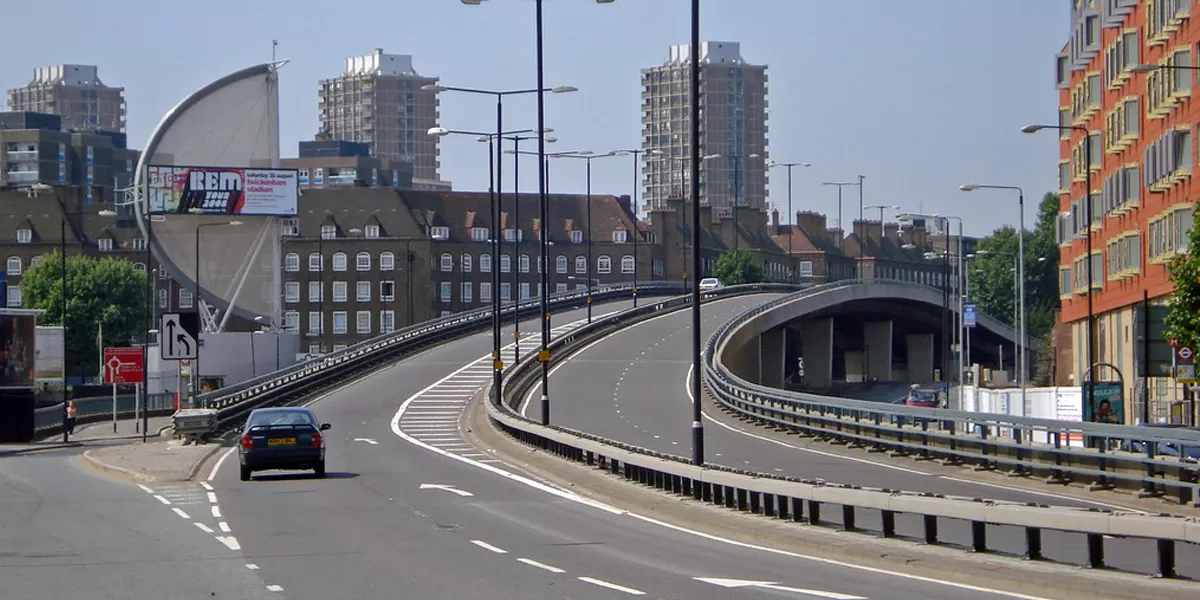A major infrastructure milestone was achieved in Ahmedabad with the inauguration of a new Rs 1.17-billion flyover at Pallav Char Rasta on May 18.
Union Home and Cooperation Minister Amit Shah, who represents the Gandhinagar Lok Sabha constituency, unveiled the structure that was expected to ease vehicular congestion for nearly 1.5 lakh daily commuters navigating through the city’s busy Naranpura zone. The flyover, constructed across the 132-feet Ring Road, extended 935 metres in length and spanned 8.4 metres in width. It reached a height of 5.37 metres at the Pragatinagar junction and featured 62 structural spans designed to allow uninterrupted traffic flow over one of Ahmedabad’s key arterial corridors. Built under the oversight of the Ahmedabad Municipal Corporation (AMC), the project sought to enhance transport efficiency and reduce bottlenecks in a city grappling with rapid urban growth and motorisation.
This addition came at a time when Ahmedabad’s urban landscape was evolving swiftly in response to rising population density and private vehicle ownership. The city housed approximately 81 flyovers, railway overbridges, and river bridges, with several more under construction across strategic locations including Vadaj, Naroda Patiya, Makarba, Bootbhawani, and the same Pallav Char Rasta corridor. Urban planners and civic officials regarded the new flyover as more than just a civil engineering feat. The project was embedded within a broader push towards improving Ahmedabad’s road infrastructure while preparing the city for a more sustainable and efficient transport network. In alignment with this vision, the AMC had committed to constructing an additional 25 flyovers in the near future to respond to the mounting pressure on city roads.
The flyover network expansion was also intended to support modal integration, paving the way for multi-level traffic segregation and possibly improved access to future electric vehicle corridors and non-motorised transport routes. Officials involved in the planning process asserted that each new structure was designed to be climate-resilient and compliant with sustainable construction norms where possible. Notably, this newly inaugurated flyover followed closely on the heels of another key transport corridor development — the 4.2 km elevated stretch along the Sarkhej-Gandhinagar (SG) Road. Completed at a cost of Rs 1.70 billion, that corridor connected the Gota and Science City flyovers, dramatically reducing congestion along the high-traffic SG Highway and setting a precedent for Ahmedabad’s flyover planning model.
The flyover inauguration also underscored the long-term vision of urban authorities to decentralise vehicular movement from congested core areas of the city. Experts pointed out that such infrastructural additions were critical to preventing future gridlocks, especially as Ahmedabad prepared itself to compete with Tier-I cities in terms of liveability, resilience, and economic productivity. Additionally, work was progressing to upgrade the Sardar Patel Ring Road, a 76-kilometre orbital stretch encircling Ahmedabad, under the stewardship of the Ahmedabad Urban Development Authority (AUDA). The ring road was being transformed into a six-lane highway, and AUDA planned to install 34 flyovers and underpasses on the corridor — up from the previous count of 16 bridges, including two spanning river bodies.
The strategic importance of these flyovers also tied into Gujarat’s broader ambitions for urban modernisation. Officials claimed that road elevation projects were instrumental not only in reducing urban air pollution caused by idling vehicles in traffic jams, but also in preparing cities for more sophisticated, clean transportation modes. These included Bus Rapid Transit System (BRTS) expansions, metro corridors, and electric public transport. However, urban policy experts cautioned that while flyovers offered short-term relief, they had to be integrated with a comprehensive urban mobility framework to avoid the pitfalls of car-centric planning. Suggestions included augmenting public transport infrastructure, preserving pedestrian pathways, investing in last-mile connectivity, and adopting nature-based solutions that prevent heat island effects caused by excessive concretisation.
Environmentalists also pointed out the need for construction practices that minimised carbon footprints, including the use of low-emission materials, efficient waste management at sites, and green landscaping of elevated corridors. While AMC and AUDA had been proactive in responding to these suggestions, there remained scope for more public dialogue on the sustainability quotient of such projects. As the city marked the formal launch on Sunday, the flyover stood as a symbolic and physical representation of Ahmedabad’s urban evolution — a balancing act between accommodating future mobility needs and ensuring that development remained people-centric and environmentally conscious.
The presence of senior leadership, including Amit Shah, at the unveiling ceremony reflected the importance accorded to infrastructure-led development at the national level. It was also seen as a reiteration of commitment towards enhancing urban liveability in Gujarat’s largest city. For residents of Naranpura and surrounding areas, the new flyover offered immediate and tangible relief from the persistent traffic snarls that had plagued the stretch for years. For the rest of Ahmedabad, it provided a glimpse into the city’s broader journey towards becoming a smart, sustainable, and seamlessly connected metropolis.
News source: Urban Acres




















